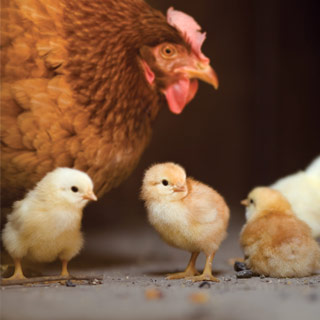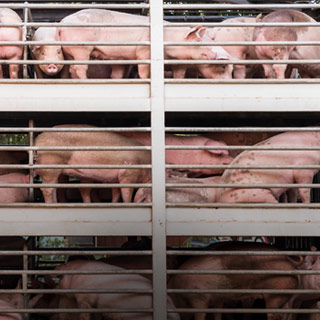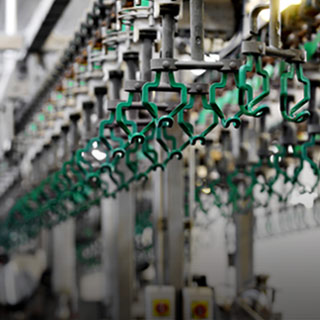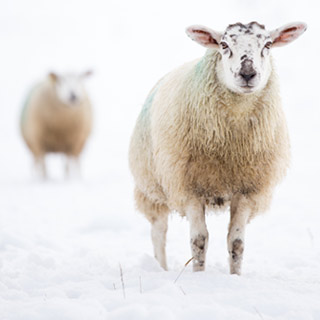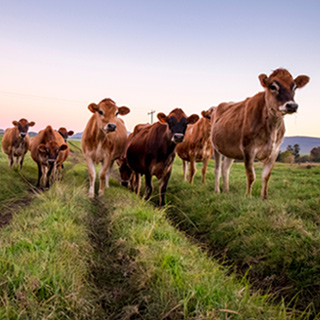AWI seeks to advance the welfare of animals raised for agricultural purposes–on the farm, during transport, and at slaughter. We support plant-based food choices and higher-welfare options when animal products are consumed and work to ensure accuracy and transparency in animal-product marketing claims pertaining to the welfare of farmed animals.
Half a century ago, family farms were prevalent. Animals grazed on pasture, breathing fresh air and feeling sunshine on their backs. During inclement weather, they were sheltered in straw-bedded barns.
In contrast, the rearing of farmed animals today is dominated by industrialized facilities (commonly referred to as “factory farms”) that maximize profits by treating animals not as sentient creatures, but as production units.
Modern methods of production are designed to create massive quantities of “cheap” meat, eggs, and dairy products. But the apparent cost savings at the cash register in fact come at enormous expense to farmed animals, the environment, human health, rural communities, and food quality and safety.
Today, over 9 billion chickens, pigs, cattle, turkeys, sheep, goats, ducks, and geese are bred, raised, and killed for food annually in America. Each is a social, feeling individual capable of experiencing pleasure. The vast majority, however, are only familiar with deprivation, fear, and pain. Raised by the thousands at a single site, animals are confined in such tight quarters that they can scarcely move, let alone behave normally, and are subjected to painful procedures to facilitate the overcrowding.
- 98.1% of farmed animals are raised on massive factory farms.
- Over 75% of egg-laying hens are housed in operations with over 100,000 hens.
- Only 1.15% of hens are housed on small farms with fewer than 100 hens.
- Over 99% of chickens raised for meat are housed on operations that raise more than 100,000 birds annually.
- Only 0.2% of chickens come from farms that raise fewer than 2,000 birds per year.
- Over 94% of pigs are housed in operations raising more than 5,000 pigs per year.
- Only 0.4% of pigs are from small farms raising fewer than 500 pigs/year.
- Over 44% of cows sold for beef are from operations selling over 2,500 cows annually (half of the nation’s beef comes from 0.4% of the farms).
- Only 3.4% of beef cows are from farms selling fewer than 50 cows per year.
- Over 41% of dairy cows are housed on operations with over 2,500 cows.
- Only 4.6% of dairy cows live on small farms with fewer than 50 milking cows.
Source: According to an analysis of USDA data conducted by FarmKind
The life of a farmed animal involves breeding, raising, transport, and slaughter. Each phase offers the opportunity for cruelty or compassion. For each aspect of industrial production, alternative methods that are both higher-welfare and economical are possible. AWI analyzes animal agriculture practices and scientific studies and works to inform and influence policymaking in a manner that raises the welfare standards of animals raised for food.
